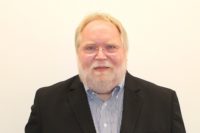Carlos Planelles, ACCIONA's managing director for North America, has over 20 years of experience in the development and delivery of large and complex infrastructure projects. He had been managing director of Ferrovial Agroman in Canada. Prior to this, he served four years with Webber LLC, a construction company based in Houston, as director of operations.
Planelles discussed the company's successful growth in Canada and its emerging presence in the U.S. This interview has been condensed and edited.
In the last 20 years, ACCIONA has become a major player in Canadian infrastructure. How did this come about?
We specialize in large and complex infrastructure delivery projects. This year, we are celebrating our 20th anniversary in Canada. In the last two decades, we’ve completed 20 infrastructure projects across Canada. Our teams finalized five public-private partnerships (P3s), built 3 bridges, 90 kilometers of highways, and more recently, water treatment plants. Our success is based on our technical capabilities—how we merge our local expertise with our global presence and experience. That’s one of the drivers of the success we’ve had. We are proud to be a key part of delivering projects build by Canadians for Canadians.
Twenty years ago, Canada was an early adopter of the P3 model. We already had decades of experience in delivering successful P3 projects in Europe. Importantly, Canadian values were culturally aligned with ours regarding sustainability and the environment. Those components were central to our identity as a company and made [the Canadian market] very attractive.
What are some examples of these values in your work in North America?
ACCIONA has a sustainability master plan. We review it every five years. We’re going a bit beyond the net zero goal—we’re trying to be net-positive on the planet, society, economy, and environment through the projects we develop. For example, we financed and built a few years ago the Fort St. John hospital in British Columbia. It was designed with sustainability in mind, and used special energy saving designed windows to save a million kilowatt-hours per year.
Our team recently won the Fargo-Moorhead P3 floodwater diversion project. We’re financing a project focused on mitigating effects of global warming in the region. The $2.5-billion flood diversion canal is a major climate-mitigation infrastructure project designed to protect families, businesses and property from catastrophic floods.
Most of your projects to date have been in Canada, but you have now been shortlisted for some major projects in the US. What are some of them?
We’re actively preparing a proposal for the California high-speed rail. Our team shortlisted for the Santa Clara BART project. We are excited about the opportunities and think it’s the start of a successful introduction into the U.S.
Speaking of the BART project, I hear it’s going to feature a major tunnel-boring machine (TBM). Tell a bit about ACCIONA's TBM experience around the world.
The BART project will have one of the largest TBMs in the world at 42 feet in diameter. ACCIONA has a lot of experience with large TBMs. We broke a record a few months ago in Ecuador, on the Quito metro, with a 9.6-meter-diameter TBM. We did almost a mile in just 30 days. This is the highest productivity level for machines of this type ever recorded.
High-speed rail has long been a dream for many transportation advocates in the US. Are we ever going to see it happen here?
It will happen in California for sure. We will hopefully be part of it. High-speed rail is a good idea from both a social and environmental point of view. Spain is the second country in the world after China with the most kilometers of high-speed rail, at 3,000 kilometers. ACCIONA has successfully built a third of that.
What is happening with TBM technology?
We have a department specializing in TBMs. The main evolution we’ll see is TBMs being able to operate better in mixed soil conditions. We are already applying technology on the Broadway subway line. The TBM we will be employing in Vancouver will be equipped with hundreds of sensors that will relay a full suite of data to a data control center where it will be analyzed letting us replace cutters before they fail. That way we can monitor, anticipate and analyze data to enhance safety and performance.
How did you get into this business?
I’m a civil engineer. In my personal evolution, I came to infrastructure because I like problem-solving. I was looking for adventure. I get to solve new problems every day. I started my career in Spain and I am blessed to have a wife and family who supported my development, moving from one place to another. I worked in Poland for 4 years. Then the company I worked for purchased a firm in Texas, and asked me to be the director of construction and operations. For four years I was based in Houston. It was a fantastic experience.
My background is mainly transportation: Rail, roads, bridges, subways. But in the last few years I’ve found that building a dam and water treatment plants are incredibly interesting and rewarding as well. I am excited about leading ACCIONA in the North American market. The challenges are tough and demanding but we face them with confidence thanks to our leadership, teams, experience and capacity for innovation.




Post a comment to this article
Report Abusive Comment